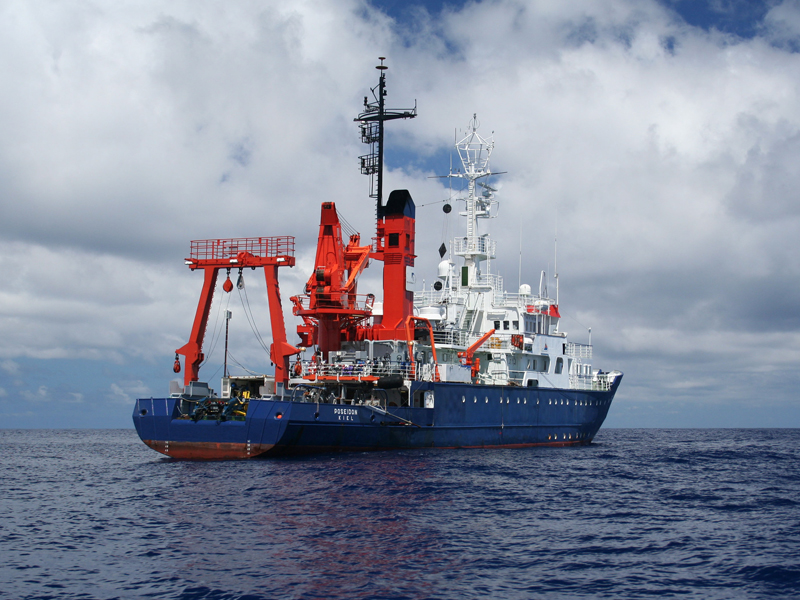POSEIDON POS496
- Area:
- Ionian Sea
- Time:
-
24.03.2016 - 04.04.2016
- Institution:
- GEOMAR
- Chief scientist:
- Sebastian Krastel-Gudegast
Mount Etna is Europe’s largest and most active volcano and it dominates Eastern Sicily’s landscape. Its capital Catania, located at the foot of Mount Etna, was extensively destroyed not only by earthquakes in 1169 and 1693, but also by numerous lava flows which ran over and around it into the sea. Today, the coastal belt near Catania is the most densely populated area in Sicily with about 1 million inhabitants, home to important infrastructure and industry, and a famous holiday destination.
Mount Etna is also one of the most intensively monitored and best studied volcanoes in the world. Repeated and ongoing GPS campaigns, permanent GPS monitoring onshore, and interferometric synthetic aperture radar (InSAR) data from the subaerial part of the volcano show that its eastern and south-eastern flanks are unstable as they continuously slide towards and into the Ionian Sea. It is important to have a close look at these movements as they may be precursors of a flank collapse, as it has happened in the geological past. Up to now, however, it is unknown how fast the submerged part of the unstable flank moves. During Poseidon expedition POS496 a team of GEOMAR will deploy a total of 15 instruments on the seafloor off Mount Etna, where they will record geodetic data for up to 3 years. Six geodesy stations will measure displacements of the seafloor across the southern submerged boundary of the volcanic flank. Three Ocean Bottom Tiltmeters will be deployed near the rim of a very steep landslide scar. They will record rotational movement in order to identify potential future instability of the seafloor. In addition, six Ocean Bottom Seismometers will record seismic events offshore that are too small for being detected with the permanent seismic network installed on land. With the new data we aim to be able to better analyze and understand the dynamics of Mount Etna’s unstable flank and its associated geohazards.



